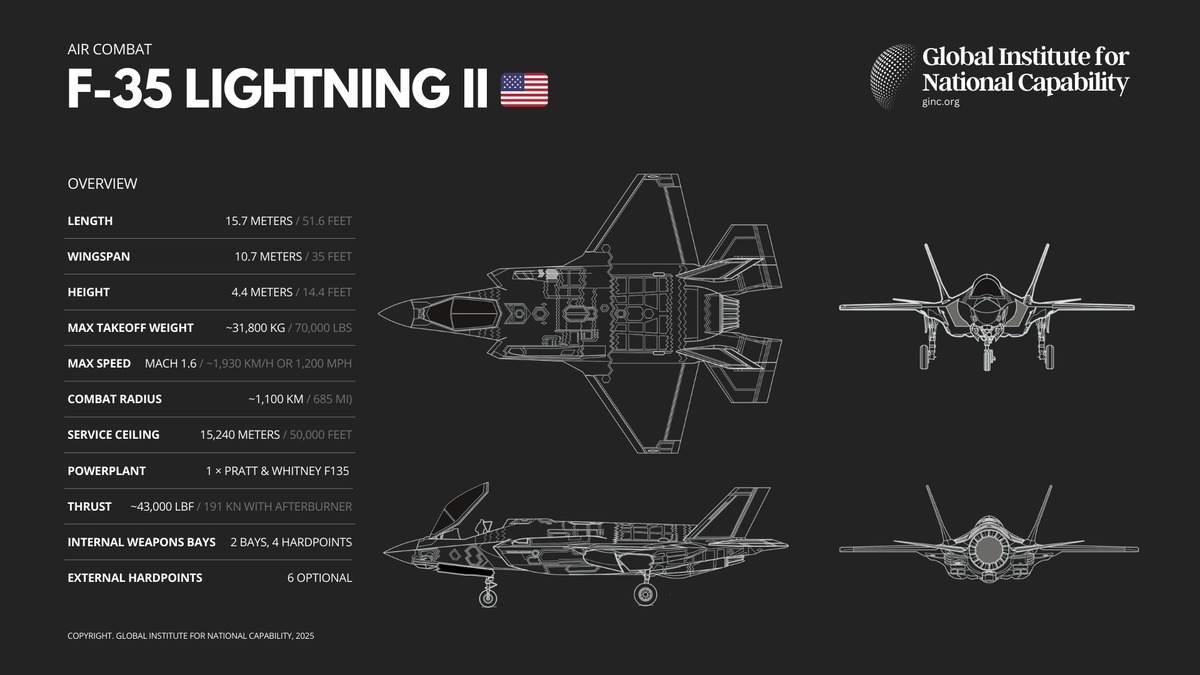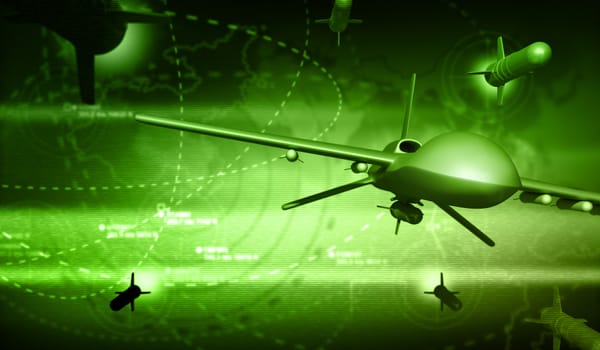F-35 Lightning II 🇺🇸
The F-35 is built to achieve air dominance, conduct precision strikes, perform electronic warfare, and gather intelligence, surveillance, and reconnaissance (ISR) — all in a single platform.

The F-35 Lightning II: Redefining 21st Century Airpower
The F-35 Lightning II is one of the most advanced and ambitious fighter aircraft programs ever undertaken. Developed by Lockheed Martin under the Joint Strike Fighter (JSF) program, the F-35 is a family of fifth-generation multirole stealth fighters designed to serve multiple branches of the U.S. military and allied nations. With its combination of stealth, advanced sensors, and networked warfare capabilities, the F-35 represents a transformational shift in air combat operations.
At its core, the F-35 is built to achieve air dominance, conduct precision strikes, perform electronic warfare, and gather intelligence, surveillance, and reconnaissance (ISR) — all in a single platform. It comes in three variants:
- F-35A: Conventional takeoff and landing (CTOL) for the U.S. Air Force and international partners.
- F-35B: Short takeoff/vertical landing (STOVL) variant, used by the U.S. Marine Corps and navies of the UK, Italy, and Japan.
- F-35C: Carrier-based variant for the U.S. Navy, designed for catapult launches and arrested recoveries on aircraft carriers.
One of the defining features of the F-35 is its stealth technology, which minimizes radar cross-section and allows it to penetrate heavily defended airspace undetected. This low observability is combined with a sensor fusion system that integrates data from multiple onboard and offboard sensors to give pilots a comprehensive picture of the battlespace — often referred to as the “God’s eye view.” This level of situational awareness is further enhanced by the Distributed Aperture System (DAS) and the Helmet Mounted Display System (HMDS), which allows pilots to “see through” the aircraft via real-time imaging.
The aircraft’s engine, the Pratt & Whitney F135, provides superior thrust and agility. The F-35B, in particular, utilizes a unique lift fan system enabling vertical landings on short runways or amphibious ships. Its internal weapons bays allow the aircraft to maintain stealth while carrying a variety of precision-guided munitions. When stealth is not essential, the F-35 can carry additional weapons on external pylons.
Strategically, the F-35 is designed to be more than just a fighter jet. It functions as a force multiplier, acting as a node in a larger sensor and communication network. By sharing information in real time with other platforms — aircraft, ships, and ground forces — it enhances the effectiveness of joint and coalition operations.
However, the program has not been without controversy. With a development cost surpassing $400 billion and projected lifetime costs of over $1.7 trillion, the F-35 has faced criticism over delays, budget overruns, and maintenance challenges. Despite this, it is now operational in over a dozen countries, with more than 1,000 units delivered globally.
In sum, the F-35 Lightning II is a transformative platform that reflects the evolving nature of air combat — where stealth, information dominance, and multi-role versatility define success. As it continues to mature and integrate into allied air forces, it will remain a cornerstone of Western airpower for decades to come.




